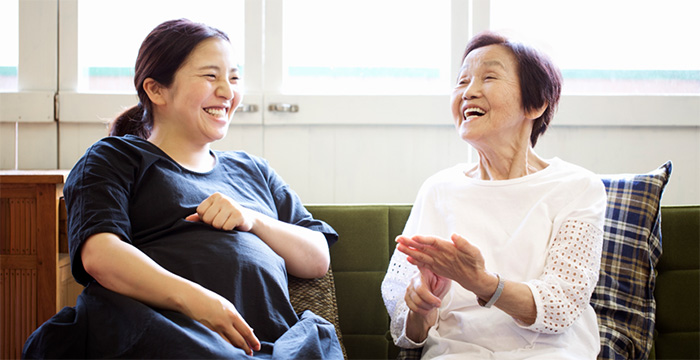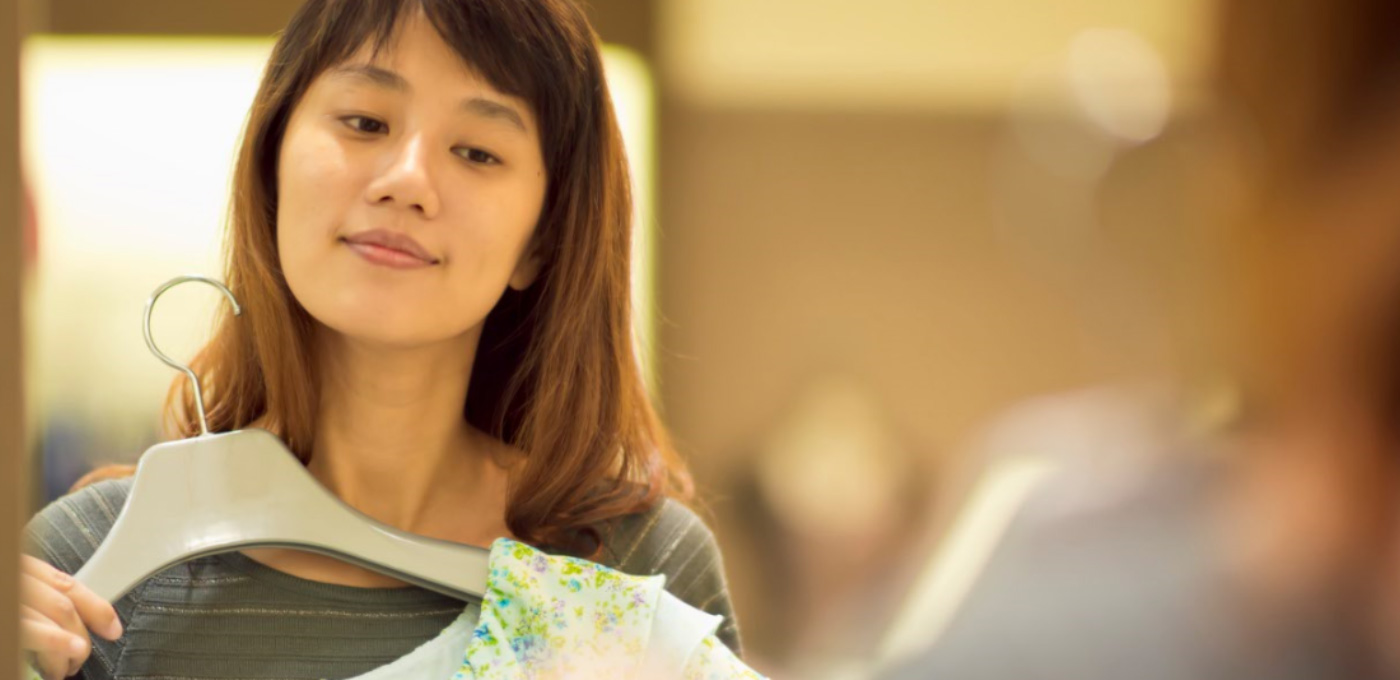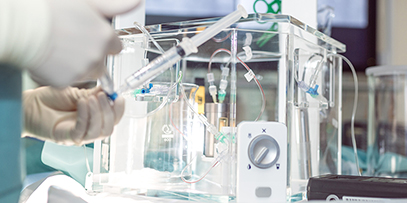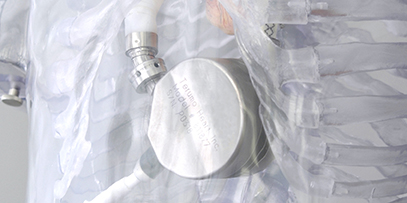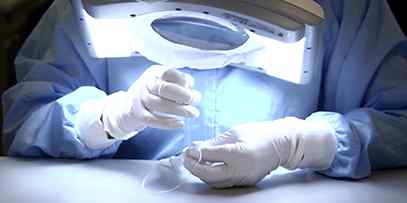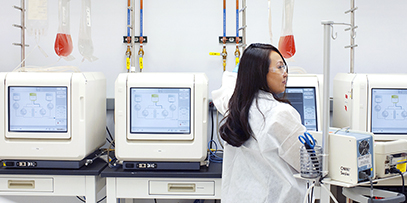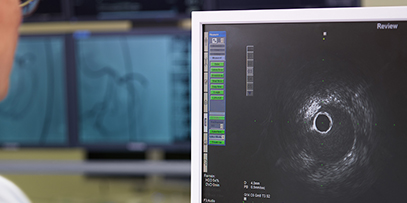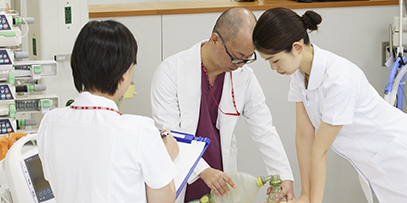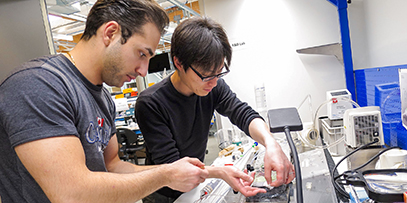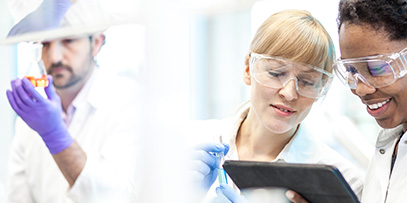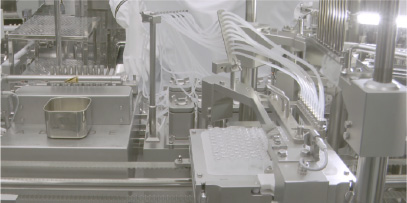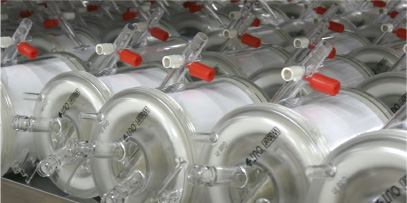 Top
TopDifficulties faced by patients receiving continuous subcutaneous insulin infusion
There are over 3.28 million patients with diabetes in Japan (2017 MHLW patient survey), and that number continues to increase. These patients include many who require daily insulin injections: Type 1 diabetes patients whose bodies do not secrete insulin due to autoimmune conditions, and some patients who have Type 2 diabetes due to genetic or lifestyle causes.
Insulin is self-injected by patients several times a day using a dedicated injection device. Sustained administration and injection timing management are both important. Especially with Type 1, frequent administration is imperative because the patient's body does not secrete insulin. To eliminate this complexity, continuous subcutaneous insulin infusion (CSII) is sometimes used. In this therapy, a portable pump is attached to the patient and a thin plastic needle is inserted under the skin, through which insulin is continuously injected.
CSII has become widely used in Europe and the United States because its use reduces the risk of complications compared to frequent injections. In the case of Japan, 10% or fewer of the 100,000 Type 1 diabetes patients are using CSII. Terumo surveyed patients who stopped CSII within one year. Reasons given for stopping included the nuisance of always carrying a pump, complications or administration trouble, and bad fit with the patient’s lifestyle due to needing to remove the pump for physical activity.
Type 1 diabetes patients include many young women, meaning that they will experience life events like entering the workforce or having children while receiving CSII. There are also diabetes patients who are unable to tell others about their illness because of misconceptions and prejudices in Japan. Living life while using a pump can be not only a physical burden, but also a psychological one that is gaining more attention as a societal problem.
Mobilizing technologies and expertise to make concepts reality
With the goal of relieving these physical and psychological burdens, Terumo started development of a new CSII pump, based on the voices of CSII patients and medical professionals. The three core concepts of the project were that it does not limit patients’ lifestyles, administers accurately, and easy to use.
To make the concepts reality, Terumo made a number of prototypes and repeatedly went through trial and error. Many diverse technologies support Terumo’s wide range of product lines: Control technologies in infusion pumps that ensure accurate volumes of drug are administered, the material processing technology for syringes and its needles, biologically safe material technologies used in IV needles, and sterilization technology to ensure peace of mind for those who use these products. Terumo incorporated its understanding of the medical settings and patient home lifestyles in which medical devices are used, its user interface expertise, its diverse technologies accumulated over decades, and all its understanding into moving the development project forward.
Fulfilling the two desires of patients and physicians: “Smaller” and “Precise”
To realize the three core concepts, the two hurdles of “smaller” and “precise administration” needed to be solved. Development engineers saw behind these hurdles the desire of patients to live freely, and of physicians for safe, accurate administration. Many medical device development projects end up focusing on the desires of either patients or physicians. Terumo looked for technologies that could achieve both.
Energy-conserving design to enable use of button cell battery:
Meeting patients’ desires
Button batteries are usually used in small devices such as watches, calculators, or pedometers. Although their low power is suited to things like liquid crystal displays, they were rarely before used for continuously-running medical devices. Engineers innovated to create an efficiently working pump, by coordinating functions to avoid concentrated power use, in which wireless transmission between pump and remote control, and operation of pump control occur simultaneously. They also designed circuit boards and tiny gears to improve power consumption.
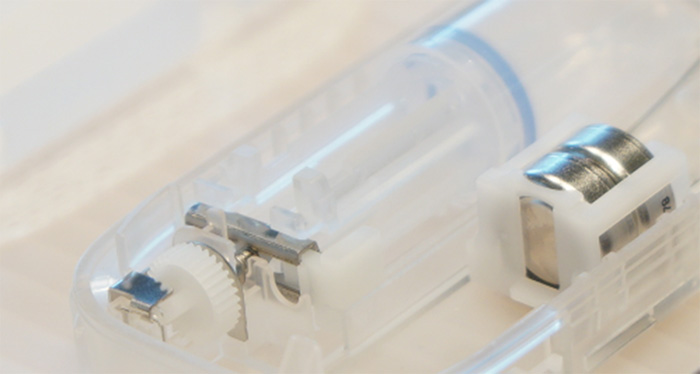
Button battery moves tiny gears
Stepper motor that precisely administers small volumes:
Meeting physicians’ desires
Aside from the pursuit of smaller size and portability, achieving precise administration of very small drug volumes is one of the most important functions of the pump. For this reason, Terumo adopted the miniature stepper motor, which can operate according to a programmed pulse signal to precisely control dosage through gear rotation angle.
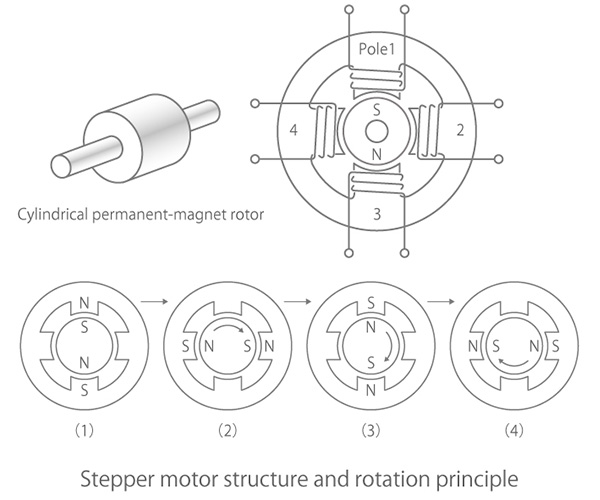
Usability design for easy operation:
Meeting the desires of both patients and physicians
For a patient continuing a daily long-term treatment, it needs to be easy to use. It’s also important for operation of the device that the handling is easy enough for medical professionals to teach it to patients. To make the pump as easy to use as possible, Terumo reduced the number of hand movements required for operation, performed user tests to confirm throughout design work that the display was easy to see and understand, and incorporated the usability perspective into design activities.
Terumo helps patients live their chosen lifestyles through technology developed with empathy
For over 30 years, Terumo has developed medical devices used to treat people with diabetes, such as Self-monitoring of Blood Glucose (SMBG) and disposable needle for pen-injector. Because patients with diabetes live their daily lives during treatment, it’s not only important to improve medical device performance and quality (physician desires), but to also eliminate the lifestyle and psychological hurdles posed by treatment (patient desires).
Diabetes treatments are evolving to restrict patient lifestyles as little as possible. Terumo will continue to integrate the new ideas that come from the perspectives of both patients and physicians with the diverse technology it has cultivated, working to support patients by reducing their physical and psychological burdens, so they can live their lives, the way they choose.
